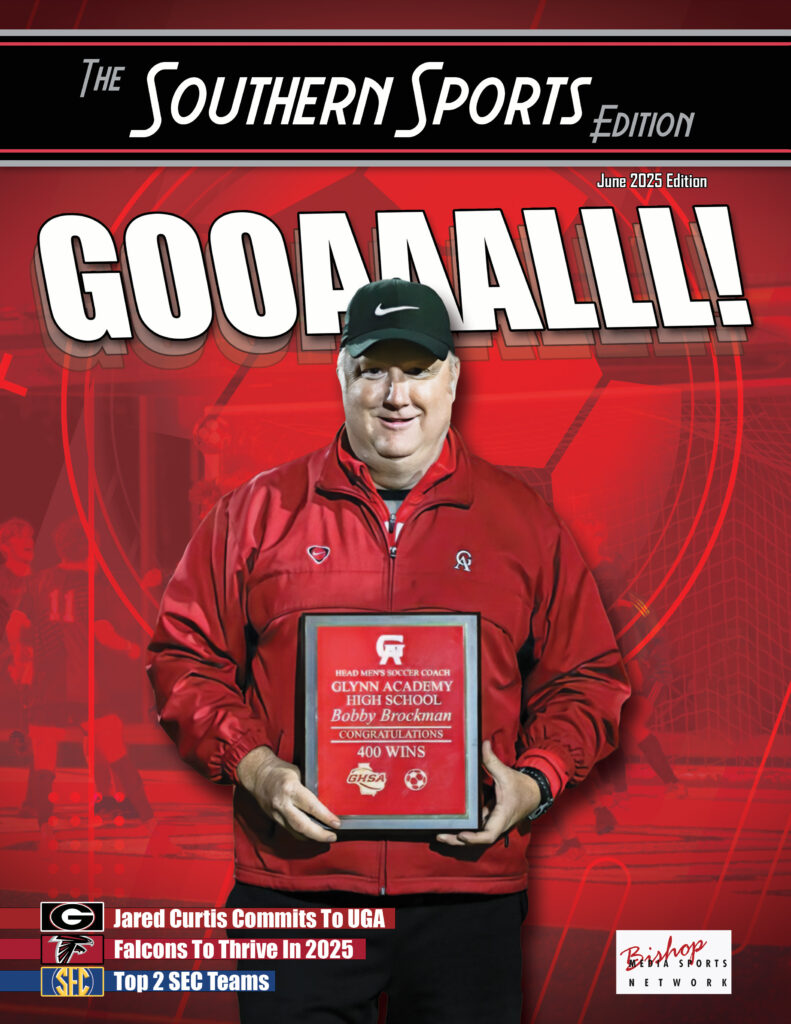Cleveland Indians
Brave Title
 By: TJ Hartnett
By: TJ Hartnett
TheSouthernSportsEdition.com news services
Fox Sports recently satiated our collective thirst for baseball, albeit briefly, by airing the Atlanta Braves’ greatest triumph: the 1995 World Series against the Cleveland Indians.
For six straight nights, Braves Country was treated to a Braves squad at the height of their powers, barely a third of the way into their 14-straight division titles. I don’t usually go for reruns – I never watch the next-day replays during the season – but this was compelling television, despite knowing the outcome.
The 90s and early 00s Braves went through little eras within those 14 years, but that 1995 team’s pitching staff and batting lineup is usually the one people could name.
Sure, the early 90s had Otis Nixon, Terry Pendleton, and Steve Avery in his prime, but no Chipper. The early 2000s had Andruw Jones and Rafael Furcal, but that scrappy Jeff Blauser/Mark Lemke tandem was gone (and then, eventually, so was Tom Glavine).
I think the 1995 team was almost perfectly constructed. Ironically, I don’t think they were the best team the Braves fielded in the 90s, but they’re the one that won it all. So, since they’re fresh on our minds, let’s look back at what made that team special.
Let’s get this out of the way first: the starting pitching was firing on all cylinders. Greg Maddux captured his 4th straight Cy Young award in 1995 (going 19-2 with a freaking 1.63 ERA), and Glavine and Smoltz were in their primes (they both had sub-3.20 ERAs, plus Glavine was World Series MVP and the next season Smoltz would be the first Cy Young winner in five years who wasn’t Mad Dog).
Avery was on the downside of his short career and Kent Mercker put up serviceable but not great numbers in the five spot. The three-headed monster at the top of the rotation made up for any deficiencies.
The bullpen gets little credit, but Mark Wohlers had a 2.09 ERA and led a stellar group of relievers with Greg McMichael, Brad Clontz, and Pedro Borbon. All of those guys had fantastic years on the bump.
The starting lineup was a classic baseball lineup. You had speed at the top of the order in Marquis Grissom, who won a Gold Glove in center field in 1995, followed by a scrapper in the two-hole in Lemke.
Then came the bashers: Bobby Cox thrust the weight of the three-hole onto rookie Chipper Jones, who rose to the occasion and was protected by sluggers Fred McGriff and David Justice hitting fourth and fifth, respectively.
Underrated slugger, Ryan Klesko was up next (he hit .310 along with his 23 homers in 1995), then catcher Javy Lopez, who hit .315 (the two highest averages on the team, for those keeping track at home).
Bringing up the end of the batting order was light-hitting (unless it was a contract year) shortstop Jeff Blauser (who I didn’t remember not playing the Series in ’95 due to an injury – Rafael Belliard took over in his place.)
The interesting thing about this lineup was that it was well-constructed enough that no one really needed to rise above the rest – note that McGriff led the team with 27 home runs and 93 RBIs that year.
McGriff and Klesko were the only members of the team that slugged over .500 (in just 107 games, mind you). But the offense worked and coupled with the pitching, they won 90 games.
More impressive is how that offense got the job done when stacked up against a Cleveland Indians team that was for the ages. A young Manny Ramirez was hitting 7th. And I’m not talking about a green, unproven Manny Ramirez; this guy hit .308 with 31 home runs and 107 RBIs. From the 7-spot.
But they couldn’t get it done. The 1995 Braves were a team of destiny but they were also a team of immense talent.
The Wild AL Wild Card
 By: TJ Hartnett
By: TJ Hartnett
TheSouthernSportsEdition.com news services
Well, here we are again. In what seems like an increasingly annual tradition, the Tampa Bay Rays are making a run at the MLB playoffs.
Indeed, it feels like I’m writing an article about the unexpected contention and postseason push of that love-able overlooked and under-dogged Rays every September.
This is no different (the Rays are over 90 wins with a week to play and are currently tied for the second American League Wild Card spot) but there are a few extra wrinkles this year. Particularly, how close the three-team Wild Card race is in the junior circuit this year.
Entering the second to last weekend of the regular season, Tampa Bay is tied with the Cleveland Indians for the second Wild Card slot, two games behind the Oakland A’s.
All three clubs are on good-to-great tears right now, with Oakland in particular smoking hot, having won 9 of their last 10 contests.
With three teams so closely competing for two postseason berths, there are a number of different ways this could shake out for Tampa Bay.
The simplest (and, assumedly, preferred by the team) assurance of a longer season is for the Rays to win one of the two spots outright. They get that one-game Wild Card playoff and they’re off to the races.
Tying with either Oakland and/or Cleveland (and/or Minnesota, which is mathematically still possible) is where things get complicated and interesting.
If one team were to fall off and the Rays tied with, say, Oakland, then whoever won the season series would be the host team in the Wild Card Game (Tampa would visit the A’s in this scenario, having lost the season series 3-4). That one is fairly simple as well.
The real fun begins when you think of the likelihood that two teams end up tied for the second Wild Card spot.
If Tampa and Cleveland end the season dead even but still behind Oakland, they would play a one-game play-in contest (which Tampa would host, as they won the season against the Indians 6-1), the winner of which would go on to the Wild Card Game in Oakland.
If all three teams have identical records on Sunday, things get very tricky. Oakland, having the highest winning percentage against the two other teams, would get to choose to be designated Team A, Team B, or Team C. Tampa, having the next highest winning percentage, would choose between the remaining to designations, and Cleveland would be assigned the remainder.
Team A would play Team B, with the winner moving on to the Wild Card Game. The loser of that game would then play Team C for the second Wild Card spot.
The question then becomes: what would Oakland prefer? Team A gets two chances, sure, but Team C gets a day off and wouldn’t need to prepare for the possibility of three straight days of must-win games (four, really, counting what is sure to be an intense final day of the season that leads to this mess).
Tampa, getting to choose second in this scenario, makes essentially the same choice: choose designation B and give yourself the chance for redemption if they lose the first game; or designation C, where they could potentially line up the likes of Charlie Morton to carry the burden of the season.
I’ve always been a supporter of the second Wild Card and the implementation of the one-and-done Wild Card Game.
It’s like having a pair of Game 7s to kick off the postseason every year. This year, with a tightly contested race for the AL Wild Card spots, we’ve got a possibility of seeing four such games.
That’s probably not the way the Rays would like things to shake out, but as a baseball fan, it’s hard to root against it.



